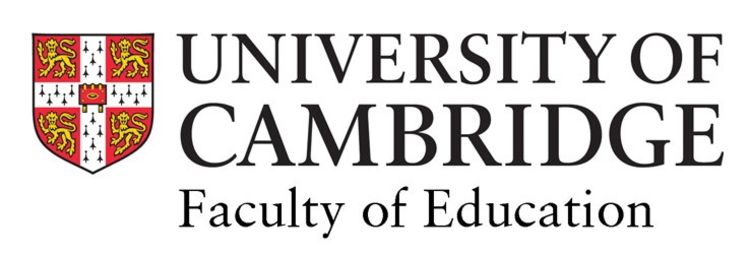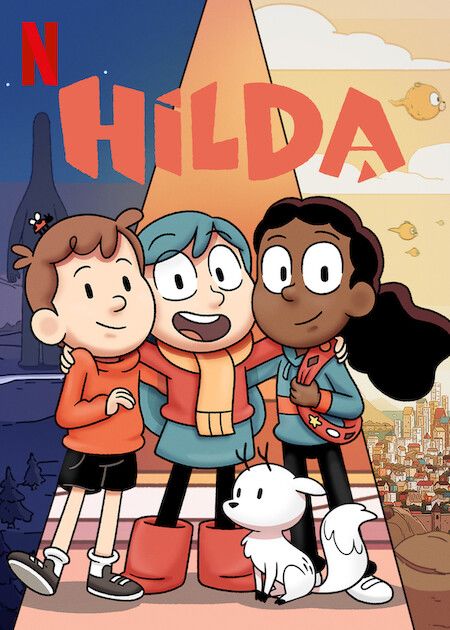

Parents don’t always know best: How Hilda offers young readers an education in ‘good’ disobedience
Hilda, a series of graphic novels about an 11-year-old girl in a magical realist world, has acquired an international fanbase and critical acclaim. As a new study explains, there is more to its appeal than sheer escapism.

“I’m Hilda, I’ve just moved here; want to be friends?” asks the heroine of Luke Pearson’s charming graphic novel series, Hilda, shortly after arriving in the fictional town of Trolberg.
Ever since she first extended that invitation more than a decade ago, young readers have been accepting it in droves. Hilda, a series of comic books about a headstrong, 11-year-old girl in a magical realist world, has acquired an international fanbase and critical acclaim. More recently, Netflix has turned it into a BAFTA and Emmy Award-winning TV series; a third season is due in 2023.
Just like the beautifully-drawn faux-Scandinavian landscape she inhabits, however, there is much more to Hilda than sheer escapism.
In a newly-published critical analysis of Pearson’s work, two researchers argue that part of Hilda’s appeal is her ability to work around the edges of adult authority. Aspects of the stories, it suggests, introduce young readers to the idea that even parents with the best of intentions don’t necessarily always know best, and sometimes we need to challenge the boundaries society sets for us in order to improve it.
Some children’s literature is great as an instructional device, but Hilda goes beyond that.
The study has been co-authored by the literature scholar Monalesia Earle and Joe Sutliff Sanders, an Associate Professor and comics specialist at the Faculty of Education, University of Cambridge.
It focuses on Hilda and the Black Hound – the fourth graphic novel in Pearson’s series. In it, Hilda unravels the mystery of the titular hound, which is terrorising Trolberg. As she does so, she sidesteps questionable rules and boundaries that her mother and other adults have imposed: rules which are often based on fear.
The authors characterise this as ‘good’ disobedience. “This idea that parents sometimes employ a ruse to get children to adhere to certain rules is a running theme of the Hilda stories,” Earle said. “They seem to be saying that while sometimes boundaries are good, at other times childhood needs to be nuanced and messy to challenge ideas about power and control that shape wider society.”
“Some children’s literature is great as an instructional device, but Hilda goes beyond that,” Sanders said. “She is hardly an out-and-out rebel, but she is introducing young readers to the importance of thinking critically and the idea that sometimes it’s good to question whether what they have been told is necessary or true.”
Earle and Sanders argue that grasping this idea is a complex but important exercise that enables them to understand how to live ethically and confront injustice.
Pearson addresses it especially skilfully in Hilda and the Black Hound. For example, the story introduces creatures called the Nisse, who inhabit the ‘unused spaces’ in people’s homes, and whom even Hilda’s mother dismisses as liars and thieves. Hilda has to break rules to help both her Nisse friend, Tontu, and the black hound itself – which despite being presented as a dangerous ‘black beast’ turns out to be an oversized dog looking for its former owner.
The story borrows heavily from Victorian Gothic literature, a genre which reinforced ideas about what was ‘normal’ and ‘acceptable’ in society with tales of malevolent forces threatening everyday life. In particular, the supernatural antagonists in Gothic stories often linked that dangerous ‘other’ with blackness. In the jingoistic climate of 19th-century politics in which they emerged, these stories ended up reinforcing racist boundaries in society which marginalised non-white communities.
So much of the experience of children’s literature is about delving into the unsaid and looking through the layers
Ambitiously, and without ever losing its sense of fun, Hilda and the Black Hound deals with similar themes. Most obviously, the hound is a mysterious, black beast hunted for crimes for which there is scant proof. The Nisse occupy a similar pariah status. Hilda is told by adults to avoid both.
One of the story’s most attractive qualities is the way in which Hilda circumvents those restrictions using an idea refined by Earle, ‘misdirection’: persuading adults that she is playing by the rules while actually being disobedient in order to do the right thing. “One of the things I love about this book is that Hilda learns to get around adult power,” Sanders said. “She sneaks into spaces adults can’t observe to advance an agenda of kindness, and is ultimately rewarded.”
A central feature of the story is her interaction with a version of the real-life scouting movement called the ‘Sparrow Scouts’, which, among other injunctions, urges children to “do a good thing every day” and “be a friend to animals”. When Hilda helps the black hound, she is taking those principles to heart – just not as the adult rule-makers intended. This is an example of ‘good’ disobedience, the study says.
It is symbolised artistically as well as in the storyline. The Nisse, for example, show Hilda how to navigate between the unused spaces in houses – under rugs or behind bookcases – creating an almost invisible route that becomes a metaphor for the circumvention of adult-imposed boundaries. Beautifully, in the comic, the characters traverse this by slipping into the white space between the panels of the story itself.
While at one level the Hilda stories are funny, enjoyable adventures with a supernatural twist, at another they therefore appear to be encouraging children to embrace exploration and imagination – especially when the frameworks adults create for them become too restrictive.
Whether this – and particularly its more political dimensions – are part of Pearson’s agenda is unclear, but in many ways the researchers argue this matters less than how his stories are watched and read. “So much of the experience of children’s literature is about delving into the unsaid and looking through the layers,” Earle said. “I think our paper is a bit of a question to Luke Pearson, but his playful use of different tropes and scripts leaves the meaning open to readers, inviting them to reconsider the world on different terms.”
The paper is published in European Comic Art.
Images in this story:
Promotional image for the Netflix series, Hilda, based on the comics by Luke Pearson. © Netflix.